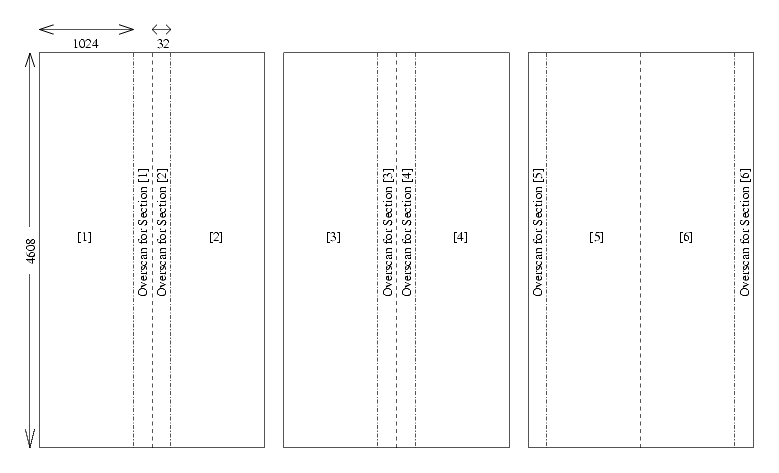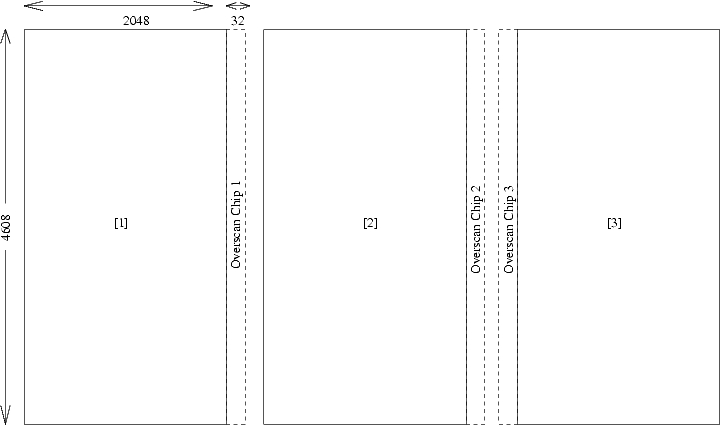![[GMOS logo]](gmoslogo.gif)
| You are in: Instruments > GMOS > Performance and Use > GMOS Components > Detectors (South) |
![[GMOS logo]](gmoslogo.gif) |
GMOS-South Detectors |
The GMOS South detector array consists of three 2048x4608 EEV chips arranged in a row. The table below gives a summary of the current detector/controller characteristics.
| Array | EEV | ||
| Pixel format | 6144x4608 pixels | ||
| Array layout | Three 2048x4068 chips in a row with ~0.5mm gaps | ||
| Pixel size | 13.5 microns square; 0.073 arcsec/pixel | ||
| Spectral Response | approx 0.3 to 0.9 microns [ data / plot ] | ||
| Bias level | Bias image |
||
| Flat field response | Fringe images Flat field images |
||
| Readout time | See observing overheads page | ||
| Chip | CCD 01 | CCD 02 | CCD 03 |
| Chip ref no. | EEV 2037-06-03 |
EEV 8194-19-04 | EEV 8261-07-04 |
| Dark current* | 3 e-/pix/hr |
2 e-/pix/hr | 3 e-/pix/hr |
| Full Well ** | 125 ke- |
125 ke- | 125 ke- |
| Fringing at 900nm *** | 73% |
68% | 67% |
* Dark current measured at -113C by Gemini Observatory.
** Saturation can be avoided by assuming 100ke- for all chips
*** (peak-valley)/mean, measured from images taken at Gemini
| Readout | Gain | CCD 01 (left amp) | CCD 02 (left amp) |
CCD 03 (right amp) |
|||
| rate | level | Gain (e-/DN) | noise (e- rms) | Gain (e-/DN) |
noise (e- rms) |
Gain (e-/DN) |
noise (e- rms) |
| Fast | High | 5.054 |
6.84 | 5.051 |
7.35 |
4.833 |
7.88 |
| " | Low | 2.408 |
4.49 | 2.295 |
4.42 |
2.260 |
4.09 |
| Slow | High | 4.954 |
5.70 | 4.532 |
4.81 |
4.411 |
4.34 |
| " | Low | 2.372 |
3.98 | 2.076 |
3.85 |
2.097 |
3.16 |
More information about the data format and GMOS data examples are available.
Binning: When pixel binning is used, the resulting datafile still contains overscan regions that are 32 samples wide.
Layout of GMOS South detector array and
structure of the output data file, when reading out in 6-amp mode,
with unbinned pixels.

Layout of GMOS South detector
array and structure of the output data file, when reading out in 3-amp
mode (using the L, L, R amps).
Last update August 17, 2007; Rodrigo Carrasco